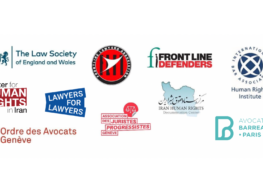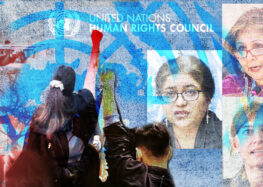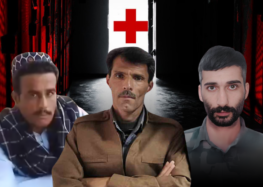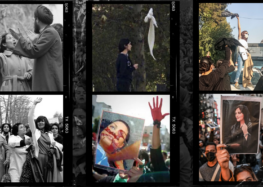Death Toll Apparently Far Exceeds Government Claims
Family members reportedly saw “hundreds” of corpses in makeshift morgue
Three hospitals recorded 34 deaths in a single day alone, compared to government claim of 20 deaths during the past month
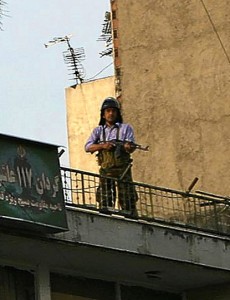 (15 July 2009) Information from Iranian hospitals and victims’ families indicates that the number of demonstrators killed by security officers and militia during demonstrations to protest Iran’s disputed 12 June presidential election far exceeds government reports, the International Campaign for Human Rights in Iran stated.
(15 July 2009) Information from Iranian hospitals and victims’ families indicates that the number of demonstrators killed by security officers and militia during demonstrations to protest Iran’s disputed 12 June presidential election far exceeds government reports, the International Campaign for Human Rights in Iran stated.
The Campaign has ascertained that on 20 June, when the government reported that 11 protesters had been killed, three Tehran hospitals placed a total of 34 corpses of demonstrators in their morgues: Imam Khomeini Hospital had 19 bodies; Rasool Akram Hospital, 8 bodies; and Loghman Hospital, 7 bodies. The information was collected by medical staff with access to the morgue records of these hospitals.
The three hospitals are located along the routes of the major demonstrations where government forces opened fire on demonstrators. There are also several other major hospitals along the routes that could have received the dead and injured on that day.
“Despite official obfuscation and denials, reliable information is accumulating suggesting that hundreds of protesters were slaughtered during the demonstrations,” stated Aaron Rhodes, a spokesperson for the Campaign. “It thus appears that large numbers of those assumed to have been held in undisclosed locations and in incommunicado detention may be dead. “
“If this is the case, history will judge these events not as ‘excessive use of force’, but as a massacre,” he said.
Families seeking information about missing relatives have reported being shown collections containing “hundreds” of photographs of the dead that have been assembled by the authorities for identification purposes, and some have reported seeing huge collections of corpses. Some family members reported to the Norooz website, belonging to the Islamic Participation Front, on 14 July, that,
authorities took them to a cold storage facility in southwest Tehran made for storing fruits and dairy products. In their presence they showed pictures of hundreds of those that have been killed until they were able to find the picture of their loved one. It took nearly thirty minutes of searching for them to find the photo of their relative. As they were leaving, they saw hundreds of bodies piled on top of each other.
Norooz reported that some families were not allowed to receive the bodies of their loved ones for burial until they avowed that the deceased had died of natural causes.
According to sources in Iran, hundreds of family members are desperately searching for their missing relatives, as did the mother of Sohrab Aarabi, a 19-year-old student who apparently died of gunshot wounds during a demonstration on 15 June, but whose death was only confirmed on 11 July.
In a publicly released letter, Sohrab’s mother recounts how on a daily basis she visited Evin prison and the courts, trying to obtain information about her missing son and was even led to believe he is in detention. An English translation of the letter by the Campaign is heart wrenching testimony to the painful experiences of the families of the missing.
A list of 185 people detained during the recent protests on 9 July has been posted outside Evin prison, including 36 women. According to sources in Tehran, on that day many other detainees were also transferred to Kahrizak, a temporary detention center in the outskirts of Tehran. There is no information about the names and numbers of these detainees.
There continues to be serious concerns about the increasing numbers of the disappeared persons who could be in detention, injured, or killed in recent weeks. Given the absolute lack of transparency and accountability by the Iranian Judiciary and related organs, the Campaign is once more urging the UN High Commissioner for Human Rights, Navi Pillay, to immediately send a special envoy to Tehran to investigate the fate of detainees and disappeared persons.


